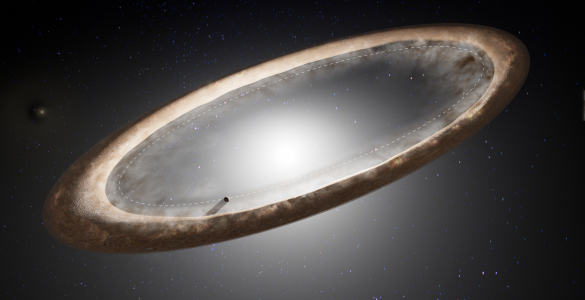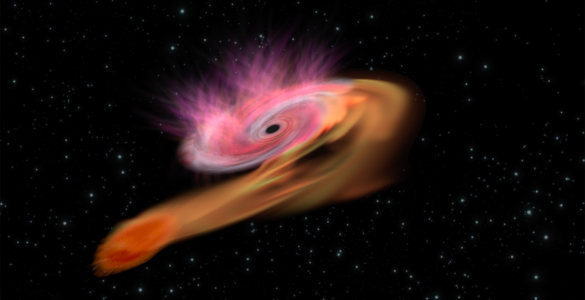The Universe is a dynamic and exciting place, with stars, planets, and galaxies being born, dying, and undergoing dramatic changes. In 2022, the telescopes of the National Science Foundation’s National Radio Astronomy Observatory (NRAO) revealed fascinating new details about several of these processes, and we’re giving you a taste of the greatest radio astronomy moments of the year.
Gravity wins tug-of-war with turbulence
In the Tarantula Nebula, where hundreds of thousands of stars are being born, ALMA observations showed that gravity can overcome even serious turbulence and keep pulling in material to form new stars.
Writing and narration provided by Phil Plait @Bad Astronomy
Discover more about star formation in the Tarantula Nebula from the original press release: https://public.nrao.edu/news/alma-star-formation-large-magellanic-cloud-30-doradus/
VLBA gives first 3-D view of system with two stars and a planet
Astronomers using the VLBA produced the first-ever full, 3-D view of a binary star system with a planet orbiting one of the stars. The surprising result provided important new insights into the process of planet formation.
Writing and narration provided by Phil Plait @Bad Astronomy
Discover more about the planet in a binary-star system from the original press release: https://public.nrao.edu/news/binary-star-planet-system/
VLA Sky Survey reveals extremely young pulsar
Data from the VLA Sky Survey revealed one of the youngest known neutron stars — possibly as young as only 14 years. The dense remnant of a supernova explosion was revealed when bright radio emission powered by the pulsar’s powerful magnetic field emerged from behind a thick shell of debris from the explosion.
Writing and narration provided by Phil Plait @Bad Astronomy
Discover more about the young pulsar from the original press release: https://public.nrao.edu/news/powerful-pulsar-in-distant-galaxy/
Binary SMBHs
Supermassive black holes can be voracious eaters, and ALMA has shown two of these monsters unexpectedly dining in close proximity as their host galaxies collide.
Writing and narration provided by Phil Plait @Bad Astronomy
Discover more about the pair of supermassive black holes from the original press release: https://public.nrao.edu/news/black-holes-dining-galaxy-merger-alma/














